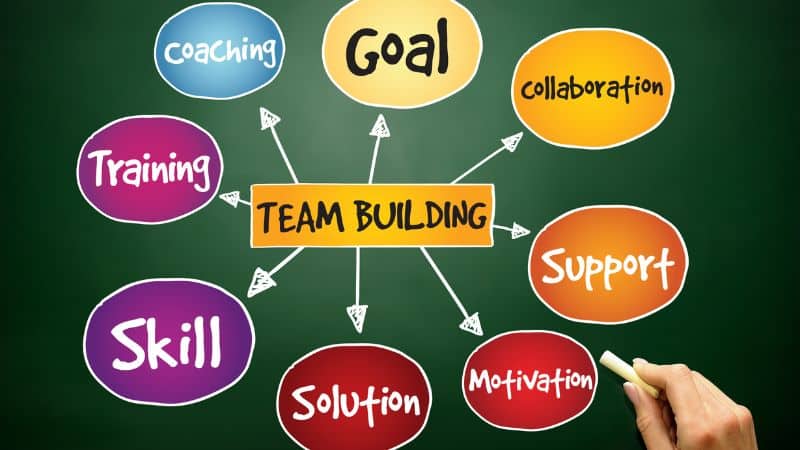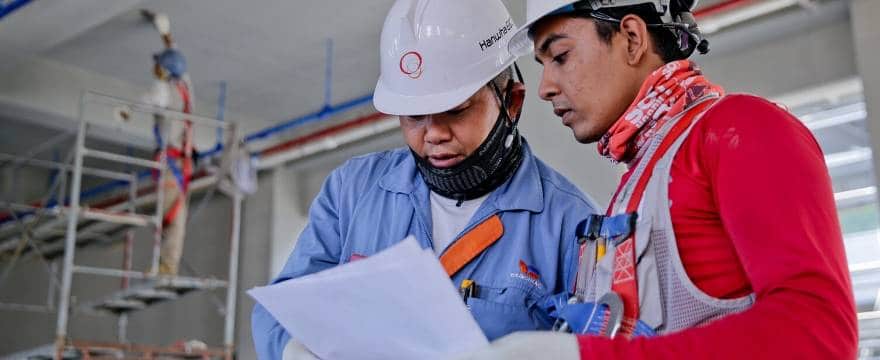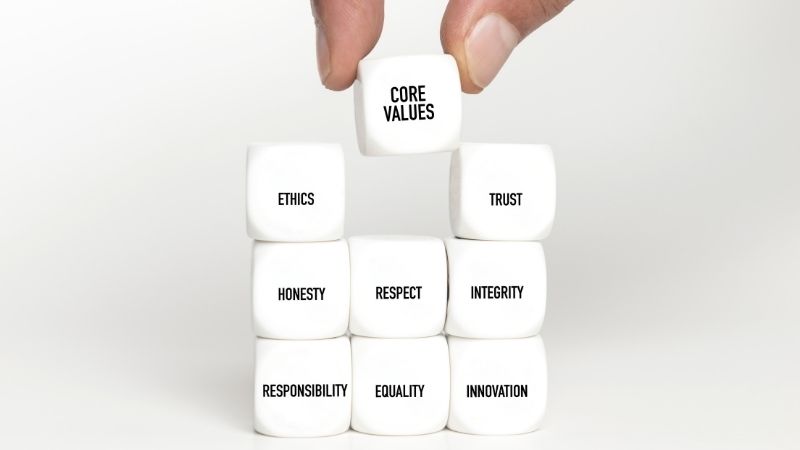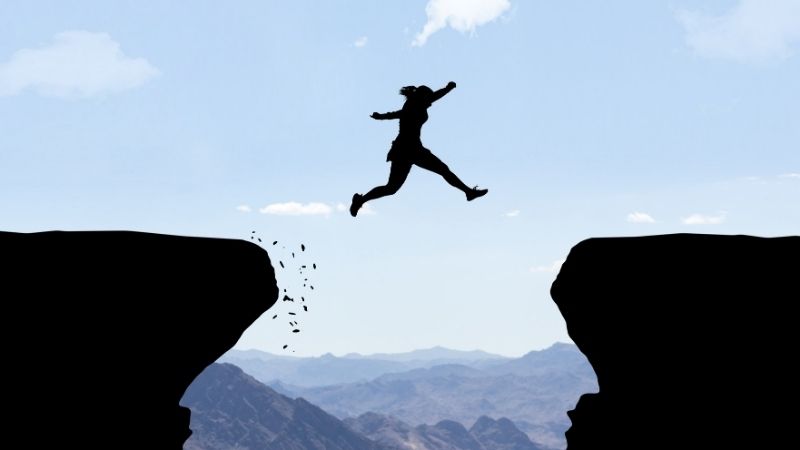Everyone knows that team building is important. That teamwork makes the dream work. That it makes ordinary people do extraordinary work.
You can build a team of winners through team building.
For good managers, team building is an intervention. It is meant to solve a problem.
It creates a positive work environment where team members feel motivated to work together and achieve their objectives.
This kind of team building involves various activities and exercises to improve team members’ communication, collaboration, problem-solving, and trust.
Successful team building can lead to improved productivity, better morale, and reduced conflicts within the team.
I this guide, I will show you how to make the most of team building to help individuals, teams, and companies succeed.
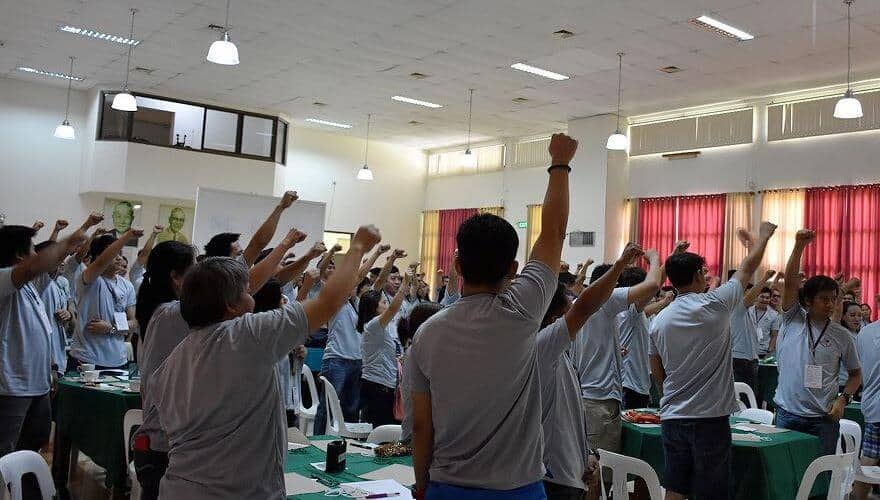
Understanding Team Building
Think about a sales team that can’t communicate effectively. They may miss targets, lose clients, and ultimately harm the company’s bottom line.
But when a sales team is firing on all cylinders, they can achieve incredible results and exceed expectations.
Whether your team can be a small startup or a large corporation, team building can help drive success, foster innovation, and create a workplace culture that people love being a part of.
You can do team building right when you know what it is and how important it is to your company’s success.
You can pick the right team-building activities that serve your purpose. And you can assess the effectiveness of your team-building initiatives too.
I will now explain what team building is and why it is important.
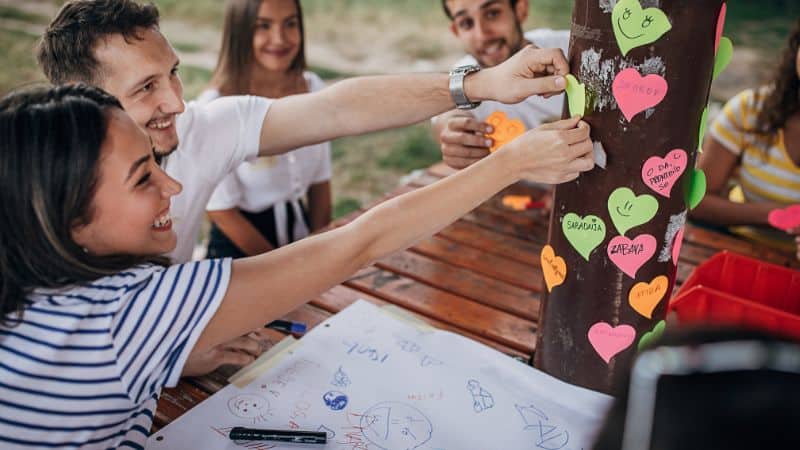
What is team building?
Team building is a process of helping individuals work as a cohesive unit. It involves activities and exercises designed to improve interpersonal relations, communication, and collaboration among employees or members of a group.
It is like making bayanihan the culture of the organization. It does not happen in a day.
This process often includes a variety of structured and unstructured activities that encourage team members to work together more effectively, understand each other’s strengths and weaknesses, and develop a sense of unity and shared purpose.
Team building has many objectives. I categorize these objectives into improving individual performance, building relationships, and helping them drive results together for the success of the company and the clients they serve.
There is a common, but wrong, belief that team building is the events, activities, and games they play.
If there is no improvement in the team’s capacity to succeed, what you experience isn’t team building.
Buying team-building packages is a convenient way to hold an event, but you must clarify goals and identify the vital behaviors to expect a transformative experience.
The team-building process is simple and easy. It is not expensive. The return on investment is good when you do it right.
Importance of Team Building
Team building is important in creating a positive work environment. When team members trust each other and communicate effectively, they are more likely to be productive, satisfied with their jobs, and committed to their organization.
Explore the objectives of team building.
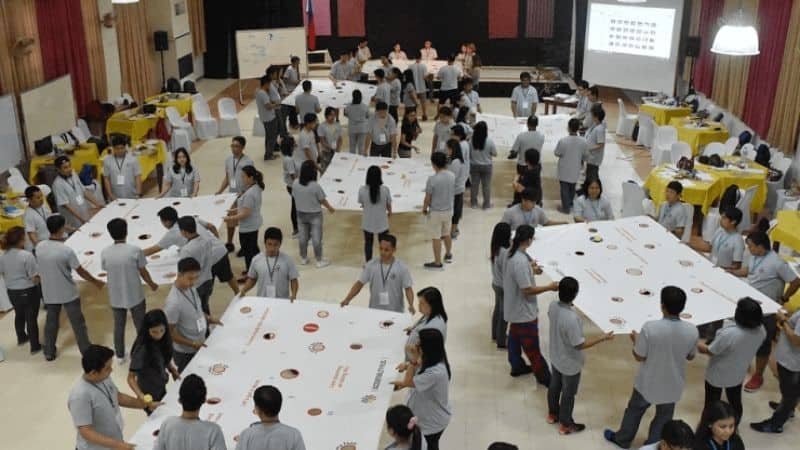
According to a study by the American Psychological Association, team-building activities can improve communication and collaboration among team members, which leads to increased productivity and job satisfaction.
In his book “Good to Great,” Collins discusses the importance of team building in creating a high-performing organization.
Collins argues that great companies are built by assembling great teams.
Most successful companies focus on hiring the right people, developing a culture of discipline, and creating a shared vision that motivates and inspires employees.
Collins emphasizes the importance of creating a cohesive team that works together towards a common goal rather than relying on individual heroes or superstars.
In addition to hiring the right people, Collins also stresses the importance of creating an environment that fosters collaboration and communication among team members.
He encourages leaders to create a culture of openness and transparency, where team members feel comfortable sharing ideas and challenging each other’s assumptions.
When you need a team-building facilitator, I can help you. Go to Team Building Facilitation.
One of my favorite leaders is Jack Welch. I learned from him about the critical importance of building a winning team.
Jack Welch is a former CEO of General Electric and is widely considered one of the most successful business leaders of the 20th century.
Welch was a strong proponent of team building, He believed that building strong teams was essential to the success of any organization.
In his book “Winning,” Welch discusses the importance of building great teams and provides several insights and strategies.
Some of the key takeaways from his book include:
Hire the best people.
Building great teams starts with hiring the right people. Be rigorous in your hiring process and focus on finding people who are not only highly skilled but also have the right attitude and fit with the company’s culture.
Encourage open communication.
Communication is critical to building great teams. Create an environment where team members feel comfortable sharing their ideas and concerns and actively seek feedback from their teams.
Empower your team,
Great leaders empower their teams to make decisions and take ownership of their work. Give your teams the resources and support they need to succeed while holding them accountable for their results.
Celebrate success,
Celebrating success is essential to building great teams. Recognize and reward your team members for their hard work and achievements and celebrate their successes as a team.
Leaders agree that team building is essential to the success of great companies.
And obviously, they don’t think that team building is all about the activities you give to people.
Explore these articles if you want to learn more about team building.
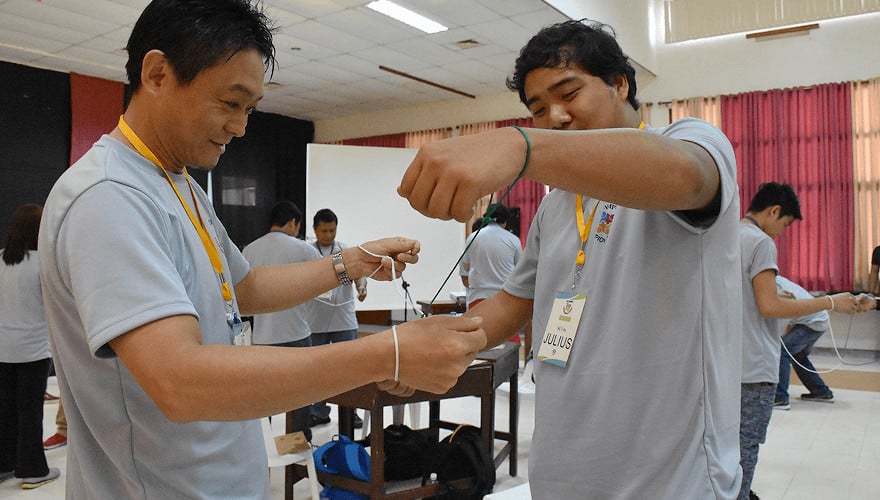
Build exceptional teams.
You don’t build a team in a day.
Putting high-performing individuals together does not build a team. We have seen that in the NBA. Three superstars joining forces may win most of the games, but not the championships. Team competence trumps individual competence.
Synergy is key to building a champion team.
This guide is very long for the uninterested.
But anyone who wants to build a winning team will find all the resources here practical and useful.
And who says that you have to read it all today?
The best use of this guide is to learn one thing and consider whether you can apply what you learn to build a winning team.
YOU are free to keep coming back to learn one more thing.
Also, I am not going to write in a day. I will continue writing, and perhaps revising my earlier articles for clarity.
Many leaders look for team-building ideas and activities. You will find these in this guide. However, I write this guide also for team leaders and managers who want to electrify engagement in teams. Later, I will quickly discuss team engagement for it is the heart of all our team-building efforts.
Aside from this guide, I will lead you to other resources so you can build effective team leaders and engaged team members.
I will give you access to tiny courses via email, online courses, webinars, and workshops.
I started designing team-building programs in 2007. I have been leading teams too. Most of what I teach about team building are the fruits of my experiences. I also study human motivation, team dynamics, and behavioral psychology.
I mentioned this so you know where I am coming from. You may contact me when you need a team-building facilitator. I am not the only one who can help you. We have a pool of professional facilitators at Team Bayanihan.
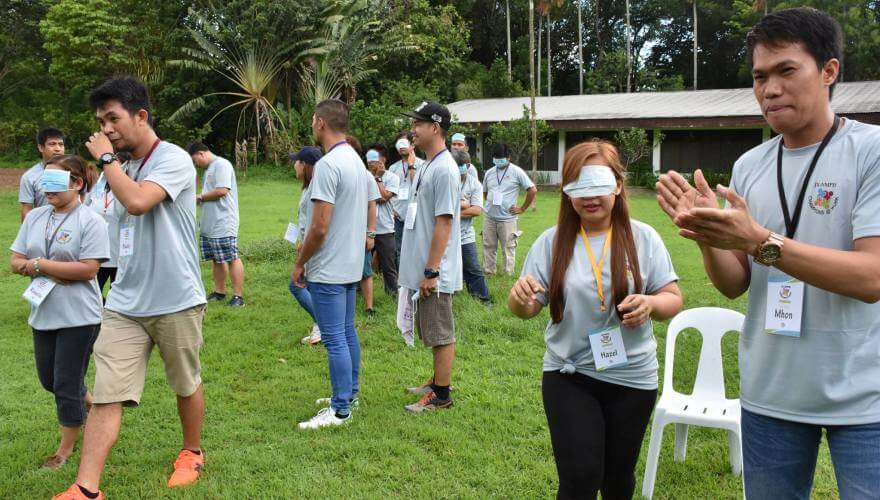
Team Building Activities
When I started facilitating team building programs, like many workplaces, I thought it was about making employees play games. That’s because the first three times that I joined team building, all we did was a series of lectures and playing games.
Team building activities are more than just a fun way to break the monotony of the workday. When I realized this, I paid more time to pick the right team building for a group to help them achieve their objectives.
Activities are essential for building and maintaining high-performing teams that can achieve organizational goals.
Here are some reasons why you must pay more attention to team-building activities.
Enhance communication: Team building activities help team members communicate better.
Activities that require collaboration and problem-solving can help team members practice effective communication and listening skills, which are critical for any team to succeed.
Build trust: Trust is essential for effective teamwork and team-building activities can help foster trust between team members.
When team members participate in activities together, they learn to rely on each other, develop empathy, and build relationships that can carry over into the workplace.
Improve collaboration: Collaboration is a key component of teamwork, and team building activities allow team members to work together in new and different ways.
Activities that require cooperation and coordination can help team members understand each other’s strengths and weaknesses and learn how to work more effectively as a team.
Boost morale: Team building activities can be a great way to boost team morale and create a positive work environment.
When team members have fun together, they feel more engaged and connected to their work and colleagues, which can translate into higher productivity and job satisfaction.
Increase creativity: Team building activities can spark creativity and innovation by providing new and different ways of thinking about problems and challenges.
Activities that require creative thinking and problem-solving can help team members develop new skills and approaches to apply to their work.
Team building activities are vital for building high-performing teams that can achieve organizational goals. By enhancing communication, building trust, improving collaboration, boosting morale, and increasing creativity, team-building activities can help teams work more effectively and achieve greater success.
Team Building Program Flow
Accidental team-building facilitators handle most team-building programs in the Philippines.
Some of them are in-house trainers who are used to classroom training.
Others are the “trusted ones” who usually organize company events. Many managers think that team building is about playing games. So, their main task is to find some games to play.
I know that more than 70 percent of companies in the Philippines do not hire facilitators. I cannot blame them. If these facilitators can only make you play games, why pay someone 35,000 pesos when all you do is go through the Spider Web for two hours and get tired of Tug O’War?
But an accidental facilitator can still do a great job. You can still do some miracles if you have three weeks to prepare.
A successful team-building program requires careful planning and an adequate flow of activities to achieve the desired outcomes.
Here are some tips on team building program flow:
Icebreakers and Warm-up Activities. Start the program with icebreakers and warm-up activities to create a relaxed and fun environment. Icebreakers help participants feel comfortable and connected.
Team Building Activities. The main segment of the program should include team-building activities that focus on specific goals or outcomes.
These activities should encourage teamwork, communication, problem-solving, and leadership skills.
Debriefing Sessions. After each activity, hold debriefing sessions to allow participants to reflect on their experiences, share their perspectives, and identify areas for improvement. Debriefing helps reinforce the learning and ensure that participants are aligned with the program’s goals.
Breaks and Energizers. Include breaks and energizers throughout the program to keep participants energized and focused. This can include physical activities, games, or relaxation techniques.
Skill-Building Workshops. Consider including skill-building workshops to provide participants with new knowledge and techniques. This can be a great way to enhance the team’s capabilities and promote continuous learning.
Team-Building Challenges. End the program with a team-building challenge that requires participants to use the skills and knowledge acquired during the program. These challenges can be a fun and engaging way to reinforce learning and create a sense of accomplishment.
Follow-up and Evaluation. After the program, follow up with participants to evaluate the program’s effectiveness and gather feedback. This helps identify areas for improvement and ensures that future team-building programs are more successful.
By following these tips, you can create a team-building program flow that is engaging, effective, and aligned with your goals.
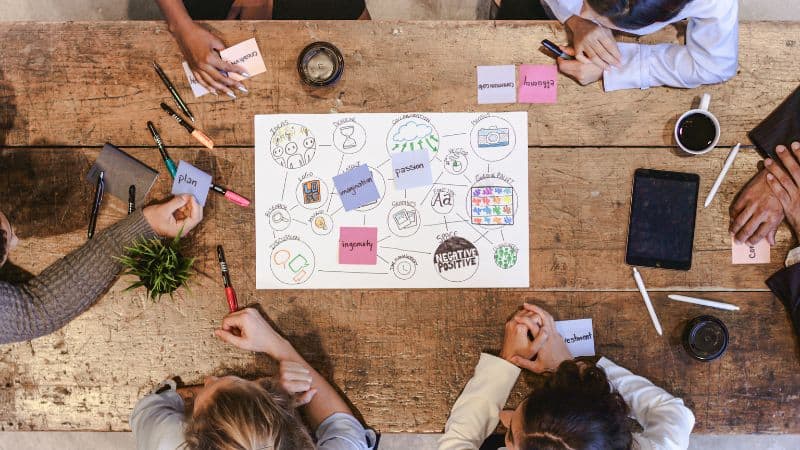
Sample Team Building Program Flow
Here’s a more detailed program flow for a team-building program that focuses on building trust, including timing and activities:
9:00 AM – 9:30 AM: Icebreaker
- Participants arrive and are welcomed by facilitators
- Participants engage in an icebreaker activity that encourages them to get to know each other (30 minutes)
9:30 AM – 11:00 AM: Trust Building Activities
- Facilitators lead trust-building activities that require participants to rely on each other and promote communication and teamwork (90 minutes)
- Activities include blindfolded walks, trust falls, and problem-solving exercises.
11:00 AM – 11:15 AM: Break and Energizer
- Participants take a break and engage in a fun and energizing activity (15 minutes)
11:15 AM – 12:00 PM: Debriefing Session
- Facilitators lead a debriefing session after each trust-building activity (45 minutes)
- Participants reflect on their experiences and share their perspectives on trust, communication, and teamwork
12:30 PM – 1:30 PM: Lunch Break
- Participants take a break and have lunch (60 minutes)
1:30 PM – 3:00 PM: Trust-Building Workshops
- Facilitators lead workshops that provide participants with new knowledge and techniques related to building trust, communication, and teamwork (90 minutes)
- Workshops include effective communication, active listening, and conflict resolution.
3:00 PM – 3:15 PM: Break and Energizer
- Participants take a break and engage in a fun and energizing activity (15 minutes)
3:15 PM – 4:30 PM: Team-Building Challenge
- Facilitators lead a team-building challenge that requires participants to use the skills and knowledge they have acquired during the program to solve a problem (75 minutes)
- The challenge is fun and engaging and promotes teamwork and communication.
4:30 PM – 5:00 PM: Closing Session
- Facilitators lead a closing session that allows participants to share their feedback and reflections on the program (30 minutes)
- Participants identify what they have learned about building trust, communication, and teamwork and how they plan to apply these skills.
By following this program flow, you can create a team-building program that promotes trust, communication, and teamwork and helps to build a stronger and more cohesive team.
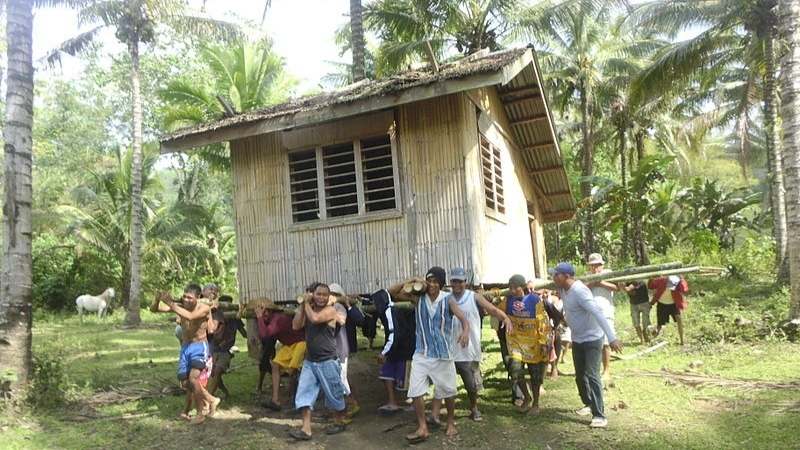
Infusing Filipino Values into Team Building
Google is a great help for those looking for team-building resources online. However, have you noticed that most strategies and activities it provides are from the US of A?
American writers produce more content. But, unfortunately, it also means that many of the values and examples we get sound foreign and strange.
Team building in the Philippines does not have to include silly games to emphasize the value of communal unity. Why? Because we have learned this since we are young.
At the very least, we can find activities that will remind us who we are and provide us opportunities to talk so we can work well together.
Filipino managers need only to be a little more creative.
We can integrate Filipino values into team building.
Integrating core Filipino values into team-building activities and workplace culture can foster a sense of unity, cooperation, and trust among team members. In addition, you will use language that everyone understands.
Here’s a discussion of some Filipino values and how managers can incorporate them into team-building initiatives:
Bayanihan (Community Spirit):
Bayanihan refers to the collective effort of a community to achieve a common goal.
Integrate Bayanihan by encouraging team members to support each other in reaching shared objectives. Team building activities that promote cooperation, such as group problem-solving challenges, can cultivate a sense of community spirit.
Pakikisama (Camaraderie):
Pakikisama emphasizes the importance of maintaining harmonious relationships, progressing with the group, and contributing to collective well-being. You can foster camaraderie in team-building activities by focusing on communication, empathy, and trust-building exercises.
Activities that require collaboration, such as team-based games or creative tasks, can strengthen camaraderie among team members.
Kusang Palo (Initiative):
Kusang Palo highlights the value of taking the initiative and being proactive in contributing to a team’s success.
Integrate this value into team-building activities, and encourage participants to take on leadership roles and make decisions independently.
For example, activities that challenge individuals to step out of their comfort zones and take responsibility for the team’s success, such as role-playing exercises, can help to develop initiative.
Utang na Loob (Debt of Gratitude):
Utang na Loob is a Filipino value that signifies the importance of gratitude and repaying kindness.
You can integrate utang na Loob by fostering a culture of appreciation and recognition.
Team-building activities that emphasize the value of gratitude, such as group reflection sessions or gratitude-sharing exercises, can create a positive team environment.
Hiya (Shame or Modesty):
Hiya encourages individuals to be mindful of their actions as they reflect on themselves and their group or community.
To promote this value in team building activities, focus on exercises emphasizing self-awareness and personal growth, such as self-reflection or feedback sessions.
Encourage team members to be open to constructive criticism and learn from their mistakes.
Malasakit (Compassion):
Malasakit is a genuine concern for the well-being of others, going above and beyond to help those in need.
Incorporating this value into team-building activities can involve volunteer work or community service projects that allow team members to give back to the community and develop a sense of empathy and compassion for others.
Managers can integrate Filipino values into team-building activities and workplace culture. As a result, you can foster strong unity, trust, and cooperation among team members.
You will improve team dynamics and contribute to the organization’s success and productivity.
Team Building Facilitator
Professional team-building facilitators are like secret weapons. They bring people together and create powerhouse teams. How? They focus on teamwork, trust, and building team competencies.
Got a problem? They’ll help you clarify. Got talent? They’ll make it shine. With their help, your team will be unstoppable.
Investing in a facilitator pays off big time. Your team becomes more than just the sum of its parts. Together, they’ll smash goals and boost productivity.
Why settle for average? Get a team-building facilitator, and watch your team soar to new heights.
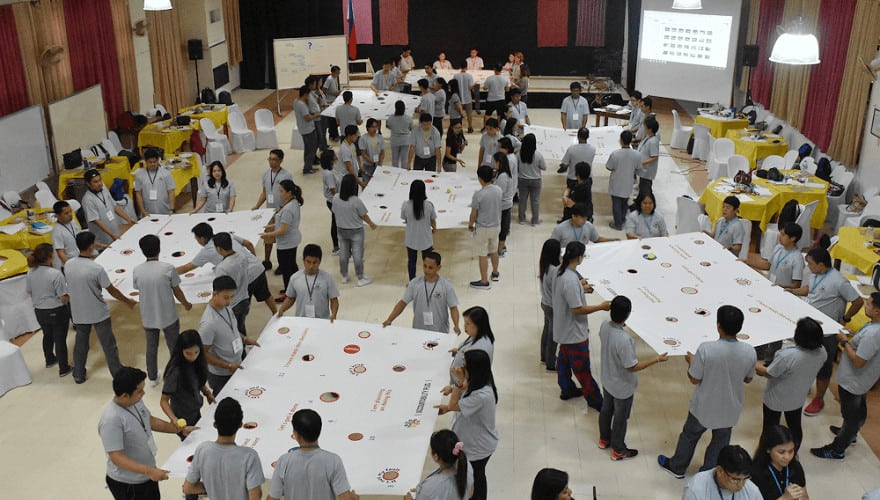
Team Building That Shapes Culture
Team Development
While team building is essential for building trust, communication, and teamwork among team members, it is also necessary to focus on team development and team engagement.
Team development involves a more long-term approach to building and improving the team’s skills and capabilities. In contrast, team engagement focuses on creating a work environment where team members feel motivated, empowered, and invested in the success of the team and the organization.
Organizations can focus on providing ongoing training, coaching, and development opportunities to team members to achieve team development.
This can include leadership development programs, skills-based training, and cross-functional training to help team members better understand each other’s roles and responsibilities.
Additionally, organizations can provide regular feedback and coaching to help team members grow and develop their skills.
On the other hand, team engagement involves creating a work environment that fosters open communication, collaboration, and a sense of belonging among team members.
This can include providing opportunities for team members to contribute their ideas and opinions, recognizing and rewarding team members for their contributions, and promoting work-life balance and well-being.
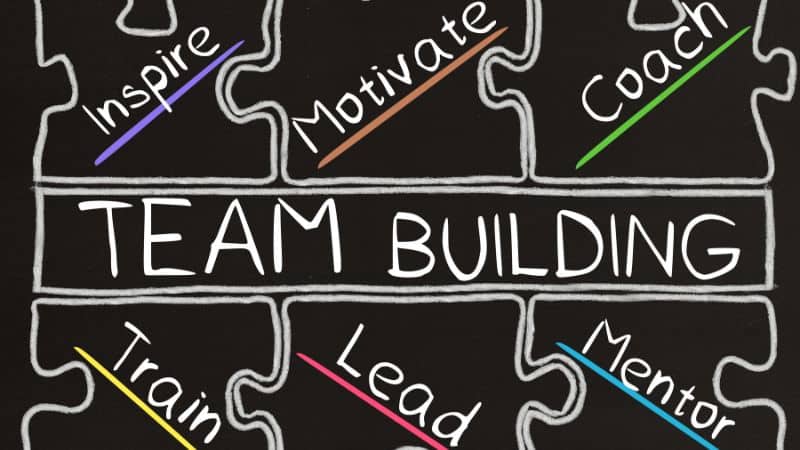
Five Stages of Team Development
Bruce Tuckman’s five stages of team development are essential to understand and guiding leaders in practical team-building efforts in the workplace.
Explore these stages and see how they manifest in everyday work scenarios.
Forming: This stage is all about introductions and excitement. Imagine a new project team coming together for the first time, getting to know each other, and discussing the goals and objectives of the project.
Storming: Conflicts may arise at this stage as team members start expressing their opinions and ideas. For example, team members may disagree on the best approach to a project and struggle to find common ground.
Norming: Team members have established trust and respect for each other and begin working together more effectively. Roles and responsibilities become defined, and communication becomes more open and effective.
An example could be a team that has found its groove and can now work towards project goals more cohesively.
Performing: The team fully works towards its goals, and members have established clear roles and responsibilities. The team works cohesively, and communication is open and effective. A performing team example could be a sales team that has exceeded its quarterly targets.
Adjourning: The project or task has been completed, and it’s time to say goodbye to each other and celebrate the team’s successes. An example of adjourning could be a team working on a seasonal project that has ended, and now they are dispersing to work on other projects.
These stages are a natural process that teams go through, and understanding them can help teams navigate the challenges and opportunities of working together effectively towards shared goals.
Successful team building is not an accident. You can design it.
Team Engagement
Team engagement is the process of building a team culture and environment that fosters motivation, commitment, and investment in the success of the team and the organization. It involves creating a work environment that promotes collaboration, innovation, and a sense of purpose among team members. The three stages of team engagement are:
- Team Alignment. At this stage, the team establishes clear goals and objectives and ensures all team members are aligned. The team also establishes roles and responsibilities for each team member and ensures everyone knows what is expected of them.
- Team Development. At this stage, the team focuses on developing the skills and capabilities of individual team members and the team. This can include training, coaching, and mentoring to help team members improve their skills and knowledge.
- Team Transition. At this stage, the team focuses on managing changes within the team, such as the transition of team members to new roles or the restructuring of the team. The team addresses any challenges or issues during this process and adapts to the unique circumstances to ensure continued success.
Team alignment is crucial because it ensures that everyone on the team is working towards the same goals and clearly understands what they need to do to achieve those goals.
Team Building Articles
No posts
FAQs
Conclusion
Team building is a critical aspect of any successful organization. Through various activities and initiatives, team building can help improve communication, collaboration, motivation, problem-solving, creativity, and leadership skills.
It can also lead to more positive company culture, increased employee satisfaction, retention, engagement, and better decision-making, profitability, and customer service.
By focusing on team building and prioritizing the development of winning teams, organizations can set themselves up for long-term success and growth. Building a winning team takes time and effort, but the rewards are well worth it.






